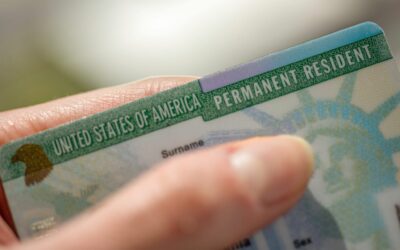How to Change Visa Category for Spouses and Children of Residents
The spouse (beneficiary) of a lawful permanent resident (petitioner) of the United States (USA) is in category 2A of the visa preference system when the petitioner petitions his or her partner. That beneficiary faces a wait of between three and five years for a visa to be available due to annual limits on the number allocated in this category. Therefore, you need to learn how to maintain or improve your visa category. It is possible to move to a different preference category that will speed up or delay your timeout. For example, a visa can be obtained faster by moving to the “immediate family” category if the petitioner becomes a U.S. citizen. Also life changes can take the beneficiary out of their visa category to a lower category or out of the list altogether. These are the most typical situations that affect married couples and their children. If The Permanent Resident (Petitioner) Becomes a Citizen If you are expecting a permanent residence (green card) based on a marriage and your petitioning spouse goes from being a lawful permanent resident to a U.S. citizen, you move from category 2A to “immediate family” and have no waiting list. This means that you will immediately begin the paperwork for your visa (if it is outside the U.S.) or your application for permanent residence (if you are in the U.S.) If your permanently resident spouse qualifies for U.S. citizenship, he or she should apply as soon as possible. Most permanent residents can apply for citizenship after having permanent residency for five years. To qualify for naturalization, your spouse must have good moral character, meet certain U.S. residency requirements, and be able to pass an English language test of U.S. history and government. When your spouse is able to obtain U.S. citizenship, you must immediately notify the government and send a copy of your certificate of citizenship along with your notice of approval of the I-130 petition to the National Visa Center (NVC) to update your preferred status to “immediate family.” If The Petitioner And Beneficiary Divorce If you and your permanent resident spouse divorce after a visa petition has been filed or approved, but before you apply for your immigrant visa or green card, the visa petition is canceled and you your derivative beneficiaries lose your eligibility for an immigrant visa or green card permanent residence. There is an exception for immigrants who are victims of emotional or physical abuse by their spouse. They can file a special petition (Form I-360) at any time until the divorce is final, or for two years afterward, if it can be shown that the divorce was related to domestic violence. What Happens To Derivatives (Children) If A Beneficiary Dies? If you, as a visa beneficiary, die, your children would lose their opportunity for a visa, unless your spouse has filed or can file a separate petition for them in category 2A or 2B or as a citizen asking stepchildren. If your family is in this situation, the U.S. permanent resident petitioner must notify the immigration service (USCIS) to “recover” the “Priority Date” of the deceased parent when the permanent resident files the new visa petitions. If USCIS assigns the deceased parent’s date to the children, the children will not have to start the waiting period again. If the Petitioner Who Has Become a U.S. Citizen Dies If in the years since your visa application was submitted, your spouse who became a U.S. citizen died before you had a chance to complete your application for a green card, all is not lost. A law passed in October 2009 allows the surviving spouse to apply for themselves, regardless of the length of the marriage before the death of the U.S. spouse. This changed the old law in which the couple had to have been married for at least two years at the time the U.S. citizen died so that the surviving spouse could petition for himself. However, the petition must now be filed within two years of the death of your U.S. citizen spouse (Beware: If your spouse passed away before the passage of this new law, October 28, 2009, your petition must have been filed within two years of the new law or before October 28, 2011). The form used is Form I-360 (instead of Form I-130). You are allowed to include your children who are under the age of 21 in that petition. You still have to prove that you and your spouse had a bona fide marriage, and that you have not remarried. You should consult with an experienced immigration attorney if you are facing the death of your petitioner. If The Petitioner Loses Permanent Residency If the permanent resident petitioner loses the right to live in the United States, the beneficiaries lose the right to live there as well. In theory, permanent residency is a status that gives a person the right to live in the United States permanently. However, this right may be removed for one of several reasons. If, for example, a permanent resident spends many months abroad, USCIS may decide that he or she abandoned his or her residence in the U.S. and refuses to let the person claim it. Also, if the petitioner commits certain crimes, their permanent residence could be taken away and the person could be deported. What happens when a Child Beneficiary turns 21? If there’s a chance your child could turn 21 before their priority date catch up, beware! The moment a child reaches 21 years of age, he or she will automatically fall into a different visa category, from 2A to 2B. The child may, however, subtract from his or her age the amount of time it took USCIS to approve the initial visa petition. This is a protection created in 2002 by the Child Status Protection Act (CSPA). Basically, you have to wait until two events have occurred: your family’s visa petition has been approved, and the children’s priority date is current. At that time, the number of days the visa petition was pending with USCIS is added, and subtracted from the child’s actual age that number of days. If the calculated result is a number less than 21 years old, the child can continue with the application for visa or permanent residence. (You must act quickly because the child is only one year old after being eligible to apply for a visa or green card.) If the CSPA does not help and your child does not fall into category 2B, the child will face a wait of several years before being eligible for a visa. This problem is known as “aging out.” (However, if your child turns 21 after your spouse has become a U.S. citizen, the prospects may be better.) It can be very stressful when a beneficiary child is close to getting a visa or green card and is about to turn 21. But until the Priority Date is earned by this stream or your spouse for U.S. citizenship, there is nothing you can really do. What happens when a child beneficiary gets married? In preference categories 2A (children of permanent residents, under 21) and 2B (children of permanent residents, over 21 years of age), beneficiaries have to be single at the time they receive a visa and entry into the U.S. (or adjustment of status if they are within the U.S.) If your children marry, your beneficiary status is revoked forever. Your only hope is that you or your spouse can get U.S. citizenship and file a new petition for them later. It should always be ensured that children do not marry until after entering the U.S. and have received their green card. USCIS may not find out about the marriage immediately but when they realize it (for example, when the immigrant applies for U.S. citizenship) they can be stripped of their permanent resident status and begin deportation proceedings. What happens to your child when your spouse becomes a U.S. citizen? If your spouse becomes a U.S. citizen, this will help you immigrate more quickly. The same is true for the immigration of your children. But there is a change. Children of citizens need to have their own visa petitions (Forms I-130) on file with USCIS to immigrate as the children of a citizen. They cannot enjoy the benefits of that parent’s new citizenship if they are simply named in their beneficiary parent’s petition. When this whole process began, your spouse may have simply put your children’s name on the visa petition for you. This would have been enough for them to immigrate if their husband had remained a permanent resident throughout the process. In other words, your children were entitled to immigrate as your derivative beneficiaries when your spouse was a permanent resident, but once you became a U.S. citizen, the children lost their derivative beneficiary status. They now need their own visa petitions. Fortunately, it’s not too late for your spouse to file separate visa applications for your children, even after you’ve become a citizen. As long as the children remain unmarried, under 21 years of age, and are natural children of their spouse or legal stepchildren (i.e., the marriage took place before they turned 18), they qualify as immediate family members like you. As immediate family members they will be able to immigrate at the same time as you. It may take a few months for new visa petitions to be approved but for most children, everything must fall into place in the end. However, there are three groups of children who are still hopeless: those who have married, those who are not legal stepchildren of their spouse, and those who have reached the age of 21. Children who have married. Children who have married could not have immigrated with you when your spouse was a permanent resident. The fact that his co-family became an American citizen doesn’t really make his situation worse. In fact, it could improve your situation if your spouse is the child’s natural parent or legal stepfather because you can file a visa petition for them in the third preference category. Children Who Are Not Legal Adopted Children Of Your Spouse. As part of filing new visa petitions for your children, your spouse will need to prove that he or she has a direct relationship with each child, either as a biological parent or legal stepparent. To be your legal stepfather, your spouse will have to prove that your marriage took place before the child turned 18. If not, that child cannot immigrate until you become a permanent resident and file a second preference visa petition for your child. Children who have turned 21. If your child has turned 21 and there is no separate visa petition that was filed by him or her, your U.S. citizen spouse can file a new separate visa application if he or she is the child’s natural parent or legal stepparent. The child will be placed in the first preference visa category, which is subject to annual quotas. The child will receive a new priority date. (You can’t “capture” the old priority date.) Conclusion Plan ahead to file I-130 forms separately for any child who will soon turn 21. Family application processes can be complex especially when there are children as part of the process. Consult with a good, experienced immigration attorney to avoid setbacks or mistakes in application tactics. Our offices are here to serve you.





